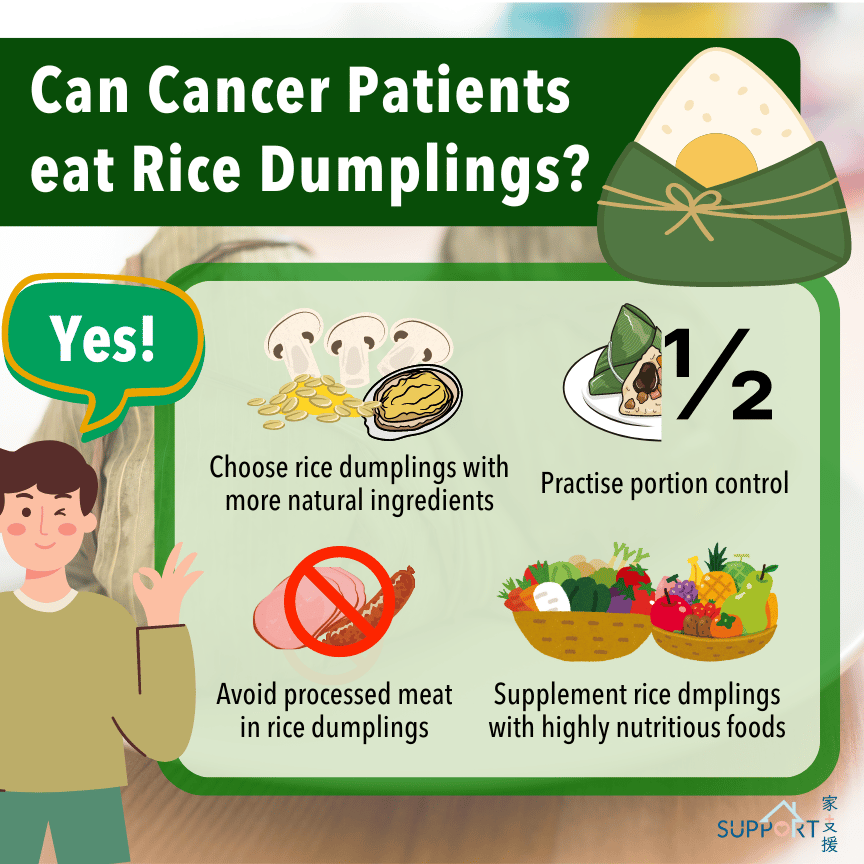
Ingredients and Nutritional Values of Different Types of Sticky Rice Dumplings
1. Salted pork sticky rice dumpling: Among the traditional-style sticky rice dumplings, one of the most common types is, without doubt, the salted pork rice dumpling. It is made with sticky rice, mung beans, salted egg yolks, fatty pork, Jinhua ham, shiitake mushrooms, etc., giving a savory and enticing flavor. According to the data provided by the Centre for Food Safety (HKSAR Government), one salted pork rice dumpling (~250g) contains approximately 17g of fat. If we take a daily total calorie intake of 2000 kcal as an example, 17g of fat is already close to one-third of the recommended fat intake. Additionally, the calorie content of one salted pork rice dumpling is higher than that of one and a half bowls of white rice1, 2. Meanwhile, there are only few ingredients that can supply abundant dietary fiber or micronutrients (including vitamins and minerals). Therefore, the overall nutritional value of salted pork rice dumplings is not considered high.
2. Supreme sticky rice dumpling (Kwoh Ching sticky rice dumpling): Another traditional type of savory sticky rice dumpling is the Kwoh Ching rice dumpling. It is known for containing an even more abundant amount of ingredients. In addition to those of the salted pork rice dumpling, lotus seeds, chestnuts, roasted duck, roasted pork belly, etc. are also commonly found in the supreme rice dumpling, which, therefore, is particularly satisfying to people's appetite. Similar to the salted pork rice dumpling, there are only few ingredients with a high nutritional value in the supreme rice dumpling. Its overall calorie and fat content is higher as well, because the amount of its ingredients is larger.
3. Alkaline sticky rice dumpling (Jianshui zongzi): The yellow-coloured alkaline sticky rice dumpling is also a commonly found traditional type of sweet sticky rice dumplings in Hong Kong. Its ingredients are simpler compared to the savory rice dumplings mentioned above. It usually consists of just alkaline water-soaked sticky rice without any filling, or is stuffed with lotus seed paste or red bean paste. In terms of nutritional value, the alkaline rice dumpling mainly provides carbohydrates, with a lower calorie and fat content compared to the savory ones. However, the alkaline rice dumpling tends to contain more sticky rice, and those with fillings contain more sugar. If it is consumed with additional sugar or syrup, the overall calorie content will be even higher. This type of sticky rice dumplings also lack nutritious ingredients such as meat and beans, resulting in a lower protein and dietary fiber content. Therefore, the overall nutritional value of the alkaline rice dumpling is not considered high.
4. Five-grain rice dumpling: To make the five-grain rice dumpling, five grains are used to replace sticky rice and green beans. Its fillings are a combination of the traditional and healthier ingredients. Compared to the sticky rice dumplings made with sticky rice and mung beans, five-grain rice dumplings provide more nutrients such as vitamins, minerals and dietary fiber. It has a higher nutritional value and has become a healthier option. However, it is important to note that, similar to sticky rice dumplings, oil, salt and sugar are also needed to make five-grain rice dumplings. Individuals should also pay attention to the ingredients of the fillings, as they can also affect the fat and calorie content, as well as the nutritional value, of the rice dumplings.



